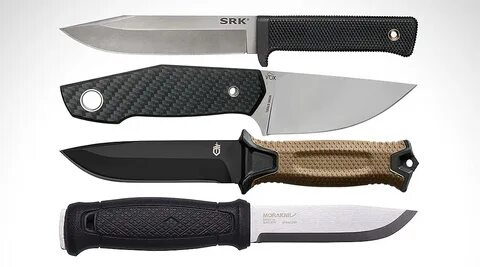Fixed Blade knives are trusted tools in many American homes, whether for outdoor use, cooking, or general utility. These knives are known for their durability, strength, and reliability compared to folding or pocket knives. However, to keep them in top shape for years, regular care and maintenance are essential.
Understanding Fixed Blade Knives
A Fixed Blade knife has a blade that does not fold or slide, making it more stable and durable than folding knives or pocket knives. The solid construction makes them perfect for tasks that require strength and precision.
In the USA, Fixed Blade knives are popular among outdoor enthusiasts, survivalists, and even chefs who prefer a stronger grip. Unlike pocket knives, these do not have moving parts, which means fewer areas prone to wear—but they still need regular maintenance.
Cleaning Your Fixed Blade Knife
Keeping your knife clean is the first and most important step in maintenance. After each use, especially in wet, dirty, or salty conditions, the blade and handle should be cleaned thoroughly.
- Use Warm Soapy Water: Gently wash the blade with warm water and a mild dish soap. Avoid using harsh chemicals that might damage the blade’s finish.
- Avoid Dishwashers: Dishwashers can harm both the blade and the handle, especially if your knife has a wooden grip.
- Dry Immediately: Once clean, dry your Fixed Blade knife with a soft cloth. Never leave it wet or exposed to moisture for long periods, as this can cause rusting—even in stainless steel blades.
- Use a Soft Brush: If dirt or blood is stuck near the handle or in crevices, use a soft brush or toothbrush to clean it.
Cleaning is especially important for Chef’s Knives and hunting knives. Any food residue or organic matter can cause corrosion over time if not removed.
Sharpening Your Knife
A dull knife can be more dangerous than a sharp one because it requires more force to cut, increasing the risk of slipping. Regular sharpening helps maintain a sharp, efficient edge and prolongs the knife’s life.
- Use a Whetstone: A whetstone gives you the most control over sharpening. Always wet the stone before use and maintain a consistent angle while sharpening.
- Try a Sharpening Rod: For a quick touch-up, a sharpening rod can help maintain the edge between deep sharpenings.
- Professional Sharpening: If you’re unsure or the blade is very dull, consider getting it professionally sharpened. Many knife retailers in the USA offer sharpening services.
Even Chef’s Knives and pocket knives benefit from a regular sharpening routine. Keeping your blade sharp reduces the wear on the knife and makes your work smoother and safer.
Oiling Your Fixed Blade Knife
Oiling prevents rust and corrosion, especially if you live in a humid climate or use your knife around water. It creates a protective layer on the blade and sometimes the handle, depending on the material.
- Choose the Right Oil: Use a food-safe mineral oil for Chef’s Knives or any knife that comes into contact with food. For others, a standard light machine oil works fine.
- Apply a Thin Layer: Wipe a small amount of oil onto the blade with a soft cloth. Don’t overdo it—just enough to coat the surface lightly.
- Oil the Handle: If your handle is wooden, apply a little oil to keep the wood from drying out and cracking.
Oiling is especially important if your knife is made of carbon steel, as this material is more prone to rusting than stainless steel.
Safe and Proper Storage
Storing your Fixed Blade knife properly ensures safety and prevents damage. Never leave it lying around or stored in a damp place.
- Use a Sheath: Most Fixed Blade knives come with a leather, plastic, or nylon sheath. These protect the blade and prevent injuries.
- Avoid Long-Term Sheath Storage: Don’t store your knife in its sheath for long periods, especially if it’s leather. Leather can hold moisture and lead to rusting.
- Keep in a Dry Place: Store your knife in a cool, dry environment away from humidity and extreme temperatures.
- Wall or Drawer Storage: A magnetic strip, knife block, or a foam-lined drawer can work well if the knife is used regularly, like Chef’s Knives in a kitchen.
Safe storage also helps keep children away from dangerous tools. A Fixed Blade knife, like any sharp tool, should be treated with respect and care.
Handle Care for Different Materials
The handle of a Fixed Blade knife can be made from many materials, including wood, rubber, micarta, and metal. Each material needs different care.
- Wooden Handles: Oil occasionally with mineral oil to keep it from drying and cracking.
- Rubber or Plastic Handles: Simply wash with soap and water. Avoid strong chemicals that can break down the material.
- Micarta and Composite Handles: These are very durable and only need basic cleaning.
- Metal Handles: Keep dry and occasionally apply a small amount of oil to prevent rust.
Whether it’s your outdoor hunting knife or a kitchen Chef’s Knife, maintaining the handle ensures a strong and comfortable grip, reducing the chances of accidents.
Avoiding Common Mistakes
Even in the USA, where quality tools are often easy to find, people still make some common mistakes when it comes to knife care. Avoid the following:
- Using the Knife as a Tool: Don’t use your Fixed Blade knife to pry open cans or dig. It’s a knife, not a screwdriver or crowbar.
- Neglecting Cleaning: Skipping cleaning leads to rust, bacteria build-up, and performance loss.
- Over-Sharpening: Sharpening too often can wear down the blade over time. Only sharpen when the knife is noticeably dull.
- Poor Storage: Leaving your knife loose in a drawer or stored in a damp place can damage the blade and even create a safety hazard.
By avoiding these simple mistakes, you can extend the life and efficiency of your Fixed Blade knife.
Caring for Fixed Blade Knives in the Field
For those who use their knives for hunting, camping, or survival tasks, field maintenance is critical.
- Wipe After Use: Always carry a cloth to wipe the blade clean after cutting. This prevents rust and keeps the blade ready for the next task.
- Field Sharpeners: Small, portable sharpeners are great for quick touch-ups in the wild.
- Compact Oil or Wipes: Some companies offer travel-sized knife oils or protective wipes that are easy to carry.
These habits make sure your knife remains reliable, especially when you need it most.
Comparing with Other Knife Types
When compared to pocket knives or folding knives, Fixed Blade knives require slightly different maintenance. Pocket knives, with their moving parts, need frequent cleaning in the hinge area. They also tend to be smaller and more portable, but they aren’t as strong.
Chef’s Knives, on the other hand, are used mainly in kitchens and require more frequent sharpening and food-safe cleaning products. However, they too benefit from the same care principles—cleaning, drying, sharpening, and safe storage.
No matter the type, knife care is about building consistent habits.
Final Thoughts
Proper maintenance of Fixed Blade knives isn’t complicated, but it does require attention and consistency. With regular cleaning, sharpening, oiling, and proper storage, your knife can last a lifetime.
Whether it’s a kitchen Chef’s Knife or a rugged outdoor blade, caring for your tools reflects your respect for them—and ensures they’re ready whenever you need them.
Fixed Blade knives are a long-term investment, especially in the USA, where quality knives are appreciated across professions and hobbies. By taking a few minutes each week for maintenance, you ensure your knife remains a reliable partner for years to come.







